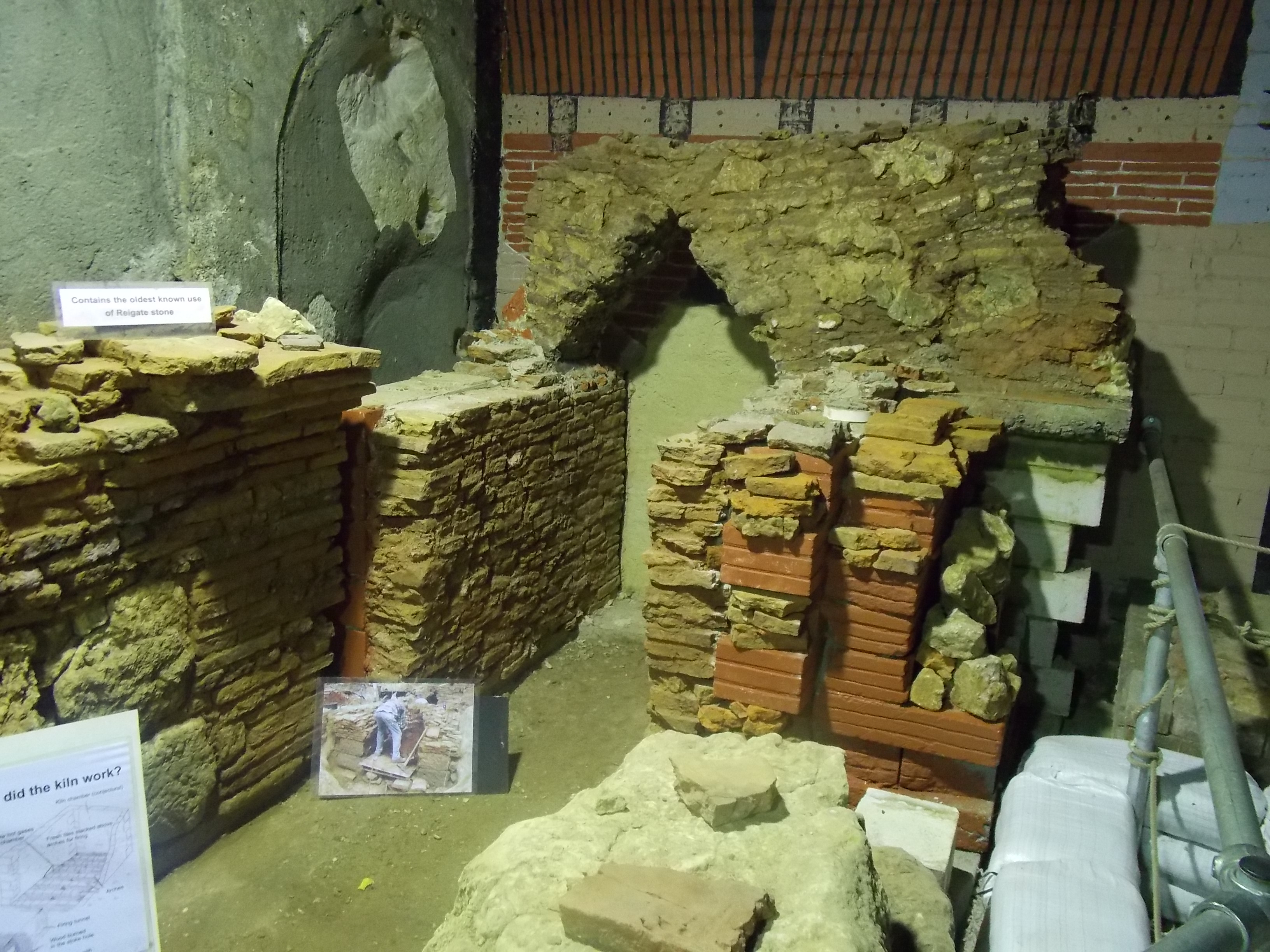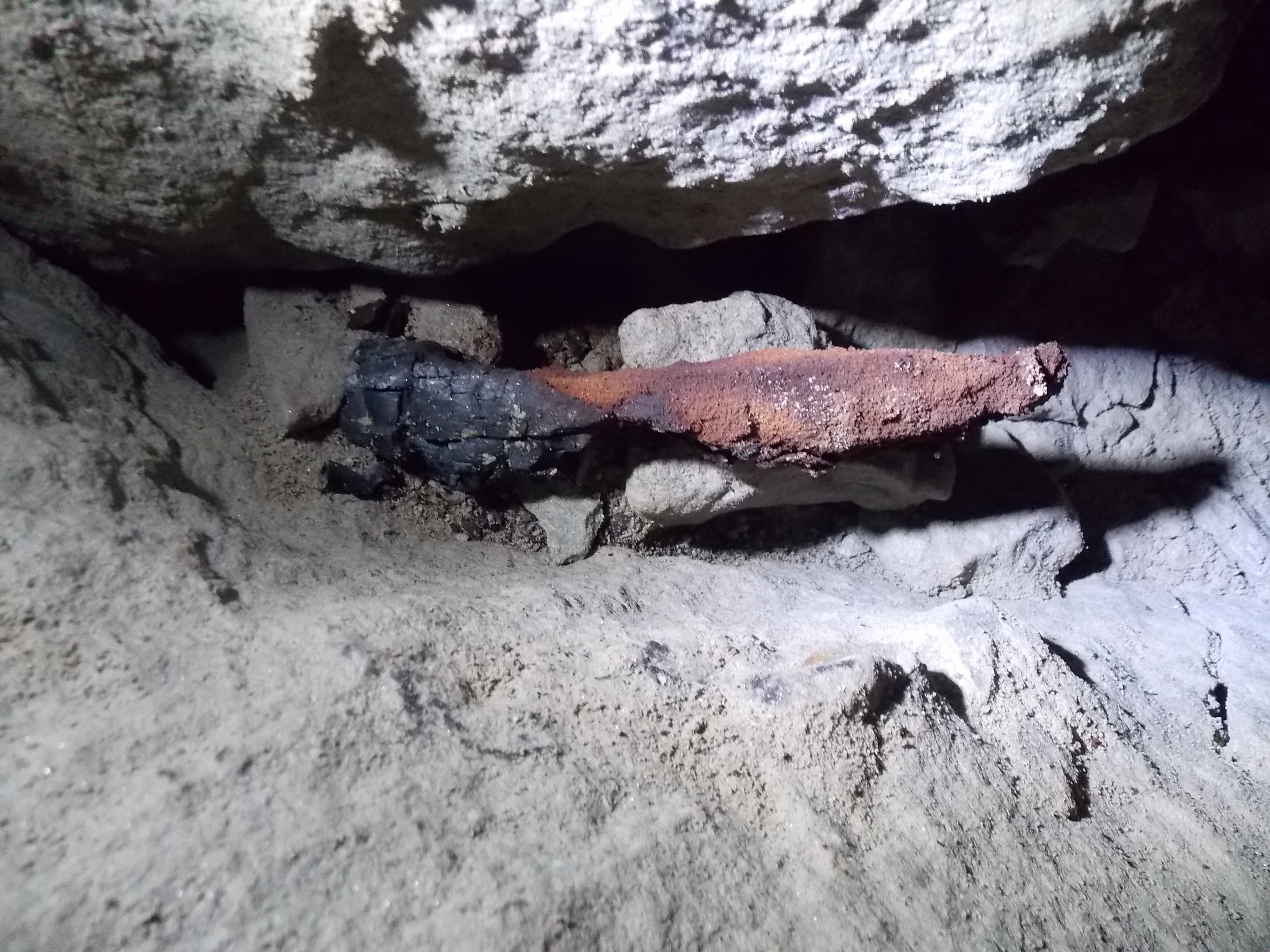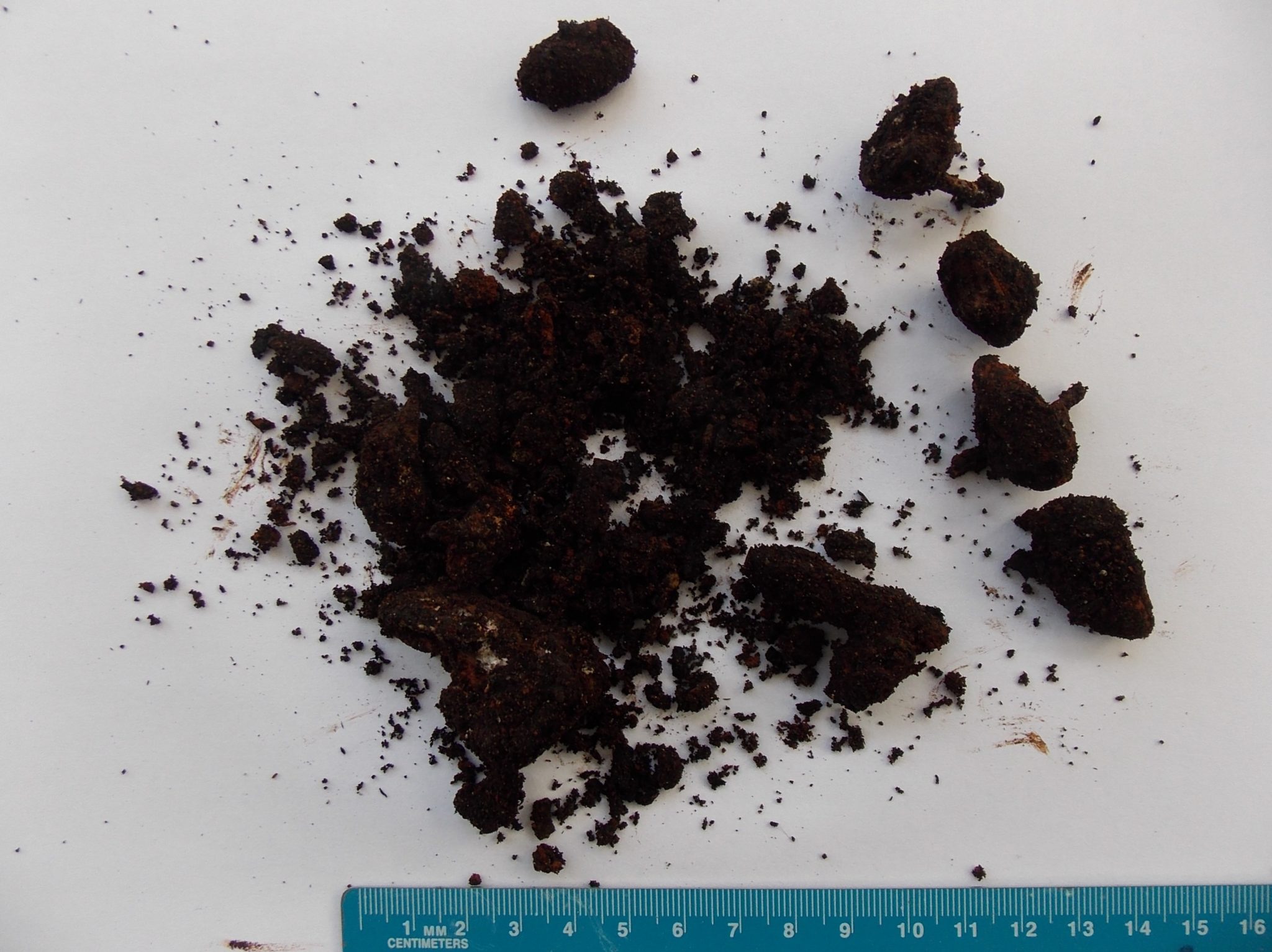
In the summer of 2017, I was made aware of a scheme to encourage community archaeological groups to submit material for radiocarbon dating. The scheme is known as the Community Archaeology Radiocarbon Dating (CARD) Fund, and there is a simple online application process for suggesting suitable items for dating.
The Wealden Cave and Mine Society (WCMS) has explored and studied a set of very extensive ancient subterranean stone quarries in Surrey for many years. Members were fortunate to discover a short series of undisturbed quarry passages in recent years, in which a few organic artefacts were found. These passages are located within what are believed to be medieval workings near Chaldon. The quarries provided stone for prestigious buildings in Medieval London.
As a separate project, in 2013, WCMS was given the remains of a Roman tile kiln, excavated in 2003/2004 at a location on the outskirts of Reigate, Surrey, and is in the process of reconstructing part of it within the Reigate Caves, to enhance a series of displays on local history.

Long before the donation was made, sections of the kiln had been placed in storage for many years, and when one of the parts was being carefully dismantled by WCMS members in order to move it to the caves, a bone was found buried deep within the structure. The kiln has not been definitively dated, and there are conflicting dates of either first or second century CE. As the kiln was clearly rebuilt and modified at least once in its period of use, this is perhaps not surprising. The bone was found within what is thought to be the first construction phase, and may well help to pin down a more accurate date for the early phase of tile-making at the site in question.

A number of samples from Chaldon, and the bone from the Reigate roman kiln were offered for consideration to the CARD Fund, and late in 2017, two artefacts from Chaldon and the bone were accepted as suitable items for dating. The email received informing us of the award, asked that the samples should be sent off immediately so they could be processed and submitted before the end of the year. This presented a bit of a challenge, as the items from Chaldon had very deliberately been left in situ, following NAMHO guidelines on the removal of artefacts: items should be left where they are found, unless there is a justifiable reason for their removal. This meant that an urgent visit to the quarry was required to remove the samples required.

The first item is a section of a stick, identified as Taxus baccata L. (yew), charred at one end, and believed to be the remains of a torch, possibly used by a casual explorer, but clearly discarded a very long time ago as the quarry section in which it was found had been isolated from the outside world for as long as anyone can recall.

The second item is the crumbled remains of what is thought to be a leather harness for a working animal, possibly an ox. The third item selected is the bone from the Roman kiln structure, identified as part of a cattle leg bone, or, to put it in terms used by the expert that identified it “the distal end of either a metatarsal or metacarpal from an even-toed ungulate”. Its size makes cattle the most likely animal.
All the artefacts were photographed in situ, and also more carefully recorded after recovery and before despatch. All artefacts were received in time, which was good news as they had to share Royal Mail resources with the rest of the Christmas mail!
This is the first time anything retrieved from the ancient Surrey quarries has ever been submitted for radiocarbon dating, although the idea has been considered for some years now. The results are eagerly awaited, and may be available by late February. Watch this space!
Correspondent: Peter Burgess
